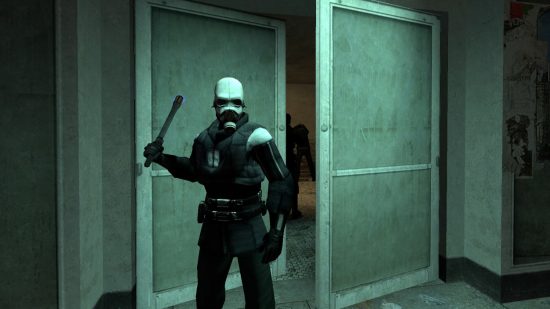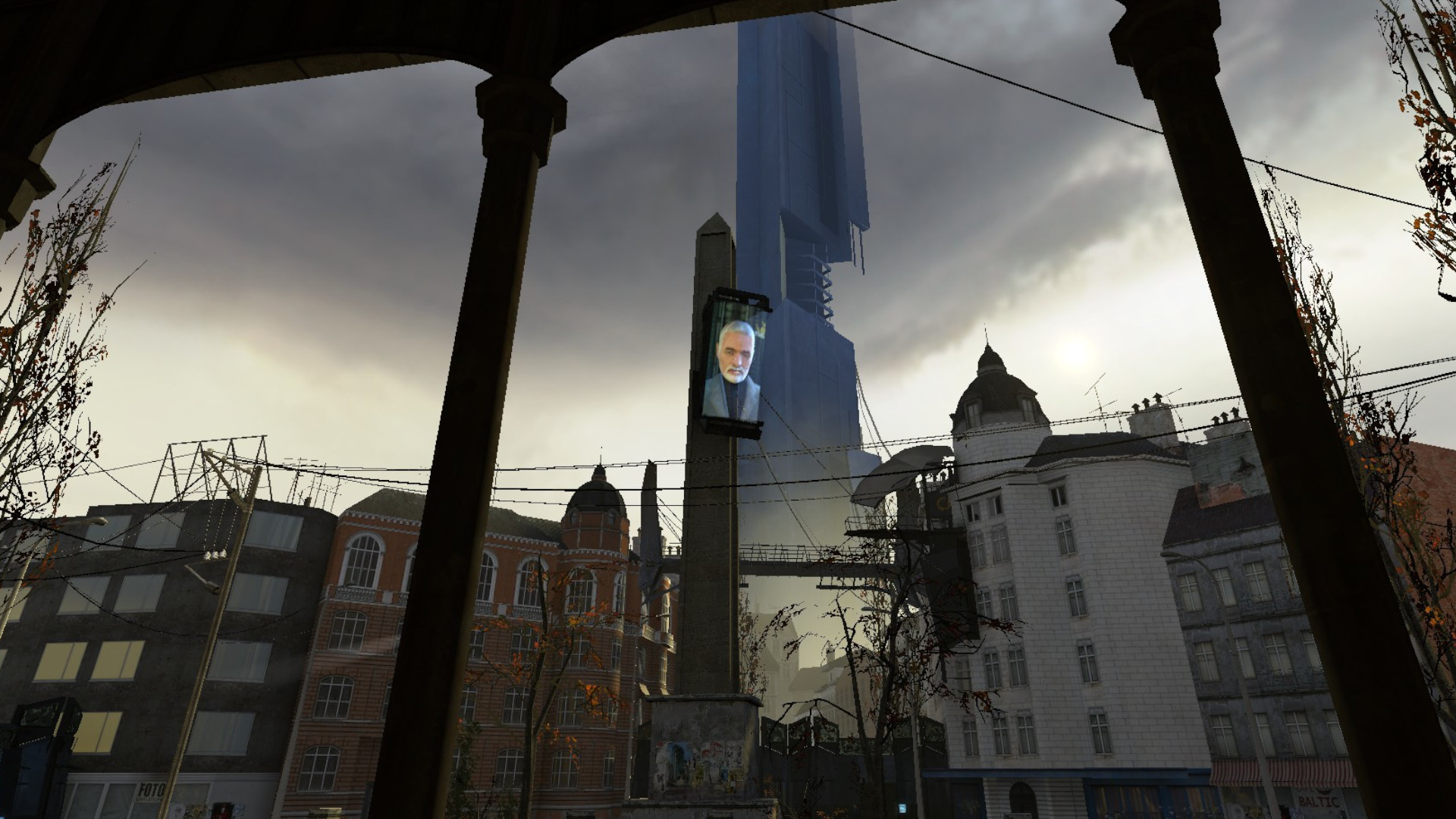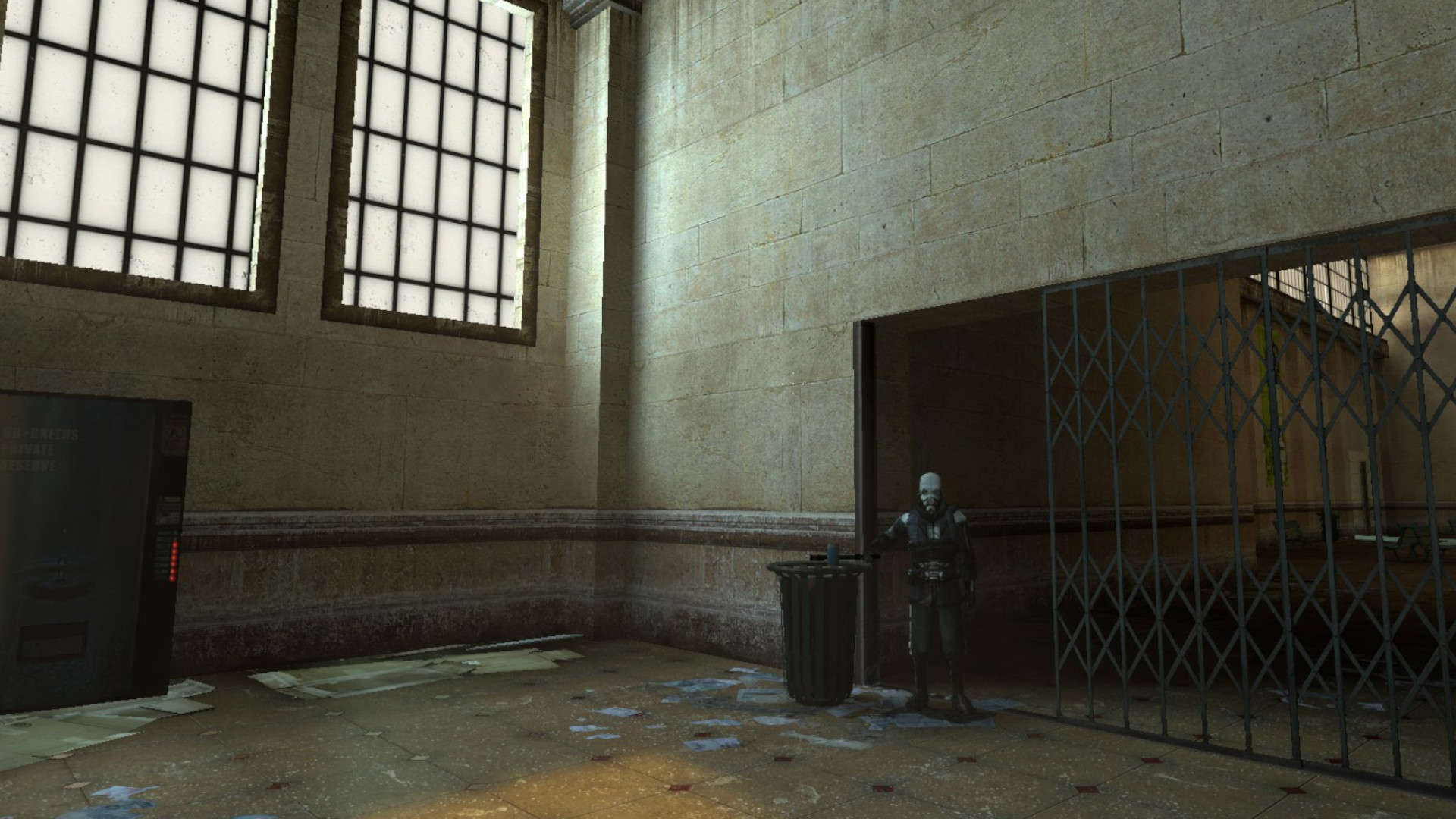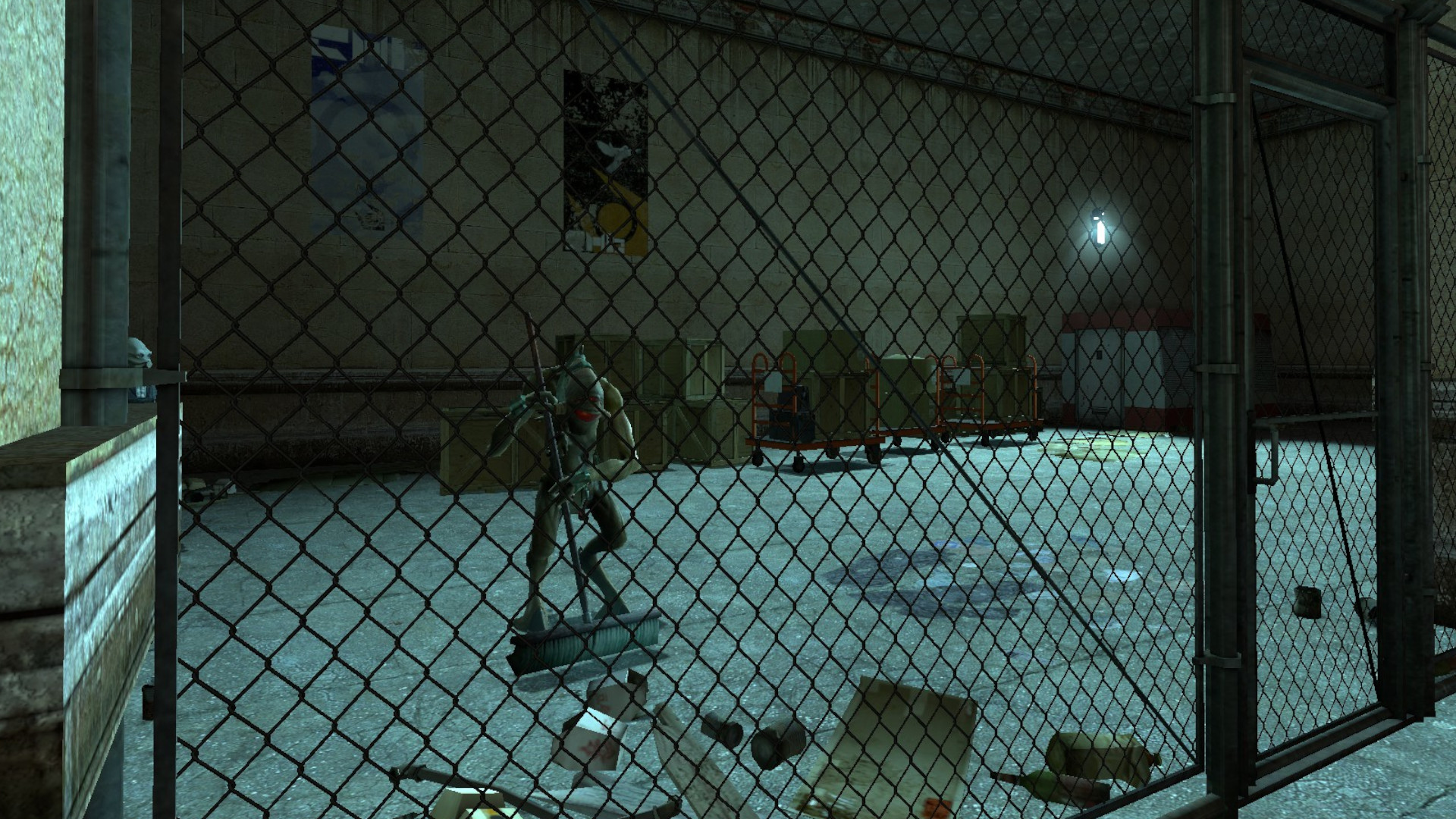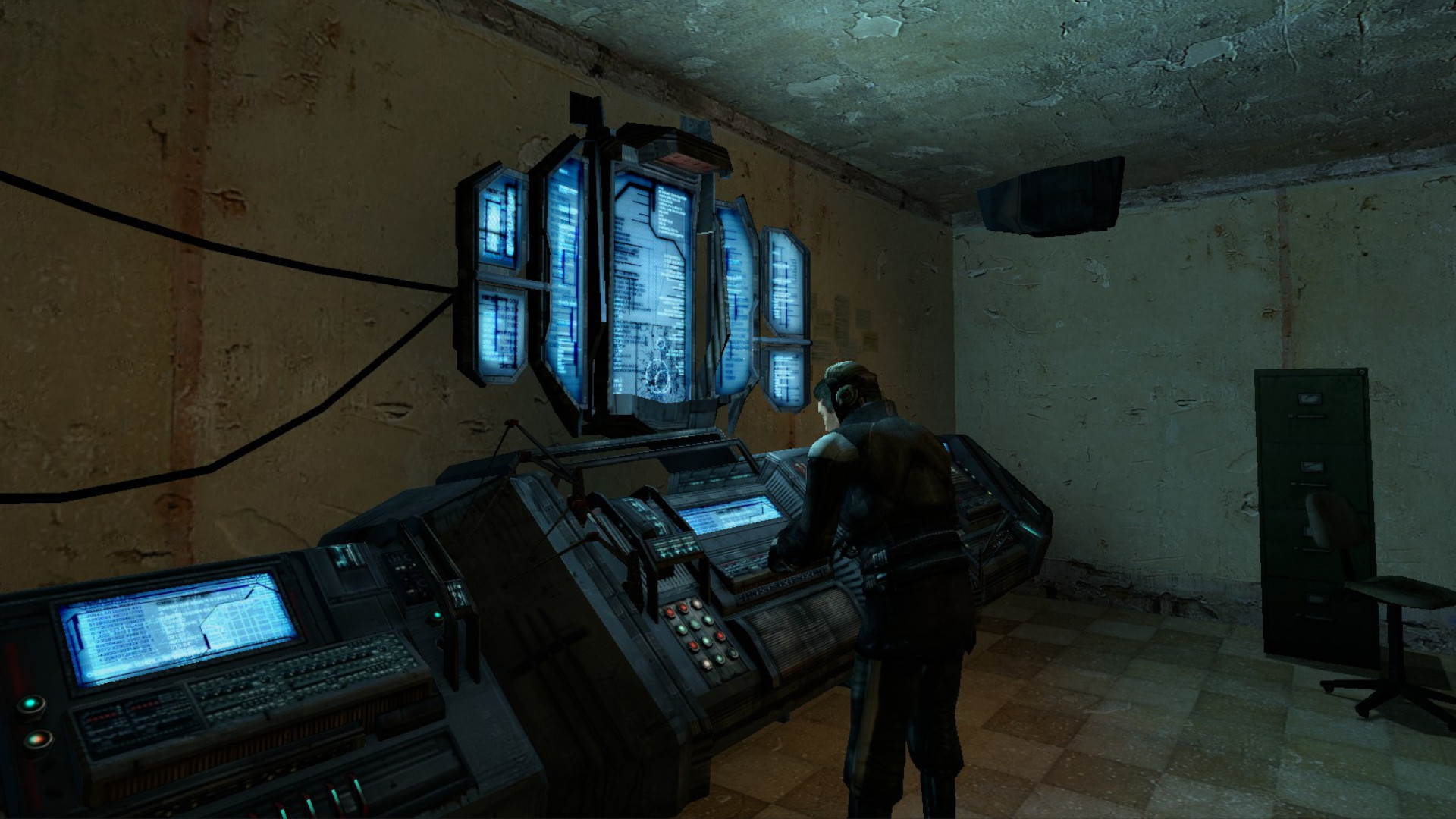It’s redundant now to declare Half-Life 2 one of the best PC games of all time. It’s like saying, “The Godfather; good movie, right?” Two decades on from Half-Life 2‘s initial release, this remains as true as it ever was.
Replay it in 2023 – the year in which the FPS game itself is set – and you’ll be treated to countless iconic, hair-raising moments and set pieces each underlined by the stunning technical achievement of Source engine, freshly unveiled alongside Half-Life 2. Beyond the groundbreaking advancements, visuals, and gameplay is the story, itself expertly crafted as if created by some master of dystopian science fiction.
Amid all this, it’s all too easy to forget that Half-Life 2’s opening chapter, Point Insertion, was – and is still – perfect. And you don’t just need to take our word for it: we have the evidence.
As you and Gordon Freeman journey through this first chapter, you’re met with a stunning blend of worldbuilding and introductory gameplay mechanics. Taken separately, these are typical of a videogame opening. However, the way in which Half-Life 2 silently integrates the two is its crowning achievement.
In the first Half-Life, Gordon Freeman’s waking nightmare begins with a monorail ride into a normal day at work; a gradual and organic introduction to the story’s world. Half-Life 2 opens in much the same way.

Plucked out of enforced stasis by the G-Man after the disaster at Black Mesa, Gordon Freeman is re-deployed into City 17 after a long, 20-year rest. His hour “has come again”. Placed on a nearly empty train, the second half of Gordon Freeman’s story also begins with a normal day, though you might not think it.
As you step off the train Doctor Breen’s voice rings out, echoing between the empty walls of the station at which we arrive. Vortigaunts – formerly one of your greatest foes – are now shackled in chains, sweeping litter-strewn floors. Breen describes City 17, this obvious hellscape, as the “finest” remaining urban centre, telling all who arrive “it’s safer here.” Even as the words leave his mouth, if you wander too close to one of the masked Civil Protection Officers you’ll be cracked over the head with one of their sunsticks.
Upon exiting the station you’re confronted with the Citadel: an impossible building so tall it reaches far into the clouds, its tip beyond sight. It’s the physical manifestation of the unfathomable power of Earth’s new, unseen oppressors. Floating cameras follow your every movement, watching and recording. Graffiti is part of the city’s essence, etched into its walls, while hushed executions are enacted down unhidden alleys and through half-open doors. A sense of downtrodden resistance lingers in the air.
As Half-Life 2 submerges you in this world of open claustrophobia, small gameplay moments are peppered throughout too. As you attempt to exit the station one of the metro cops blocks you, presenting you with a choice. “Pick up that can,” is, of course, iconic, and for good reason. It acts both as a storytelling moment, demonstrating the petty tyranny of the oppressors, and an introduction to the groundbreaking physics of the Source engine, an engine which is now transitioning into its latest phase with the upcoming Counter Strike 2 release date.
There are other moments when you’re directed to interact with this world directly too, establishing its boundaries and rules. You sprint along wonky planks which connect rooftops, duck as bullets fly past you, and stack boxes to access open windows. But while learning the mechanics of Half-Life 2 as you’re introduced to its story, the biggest miracle is you never feel the weight of the game’s invisible, steering hand.
Organically blocked or organically open (with no objective markers or arrows pointing you in the right direction) you feel as if you’re making your own choices: exploring the city’s narrow streets, running breathlessly up stairs in an apartment block under siege, wobbling along rooftops while being pursued. The directions you take feel of your own choosing. This is only the illusion of choice in what is an entirely linear narrative, but it’s masterfully done.
In the closing chapters of Half-Life 2, after escaping the clutches of the Combine, we return to City 17 in a conclusive confrontation. The player is brought back to the main square, and walks the same streets: now a warzone. Liberating City 17 and storming The Citadel wouldn’t feel so personal – and urgent – if you hadn’t experienced the oppression of the place first-hand for yourself. The triumph of the end is entirely supported by the unforgettable memory of the beginning.
Through the eyes of the player there’s nothing normal about this distorted environment we find ourselves in. But, the moments we witness are entirely normal to the exhausted, terrified inhabitants of City 17. From the start, this alone tells us so much about the story which is about to unfold, while also balancing a steady introduction to new gameplay elements. We aren’t told: ‘Earth has been occupied by some terrifying external force.’ Instead we see that for ourselves in every single passing detail.
Immensely evocative without being overbearing, Half-Life 2’s Point Insertion remains a perfect first chapter, and a masterclass in the principle of ‘show don’t tell,’ both in terms of story and gameplay. There are novels, TV series, and movies which aim at something similar, which could learn so much from the fully realised storytelling on display here.
Every single detail is intentional: we see explicitly with our own eyes what has happened to the world without it ever being spelled out. Half-Life 2 trusts your intelligence and your skills of observation as you absorb this world while uncovering gameplay mechanics through intuition.
While you wait for the Half-Life 3 release date, should it ever come, you could do much worse than dusting off this two-decade old game. You’ll find everything you could ever need from a single-player game, and all in its first chapter. For more on the best PC games, check out everything we know so far about the potential GTA 6 release date as well as our round-up of all the upcoming PC games due to release soon.
